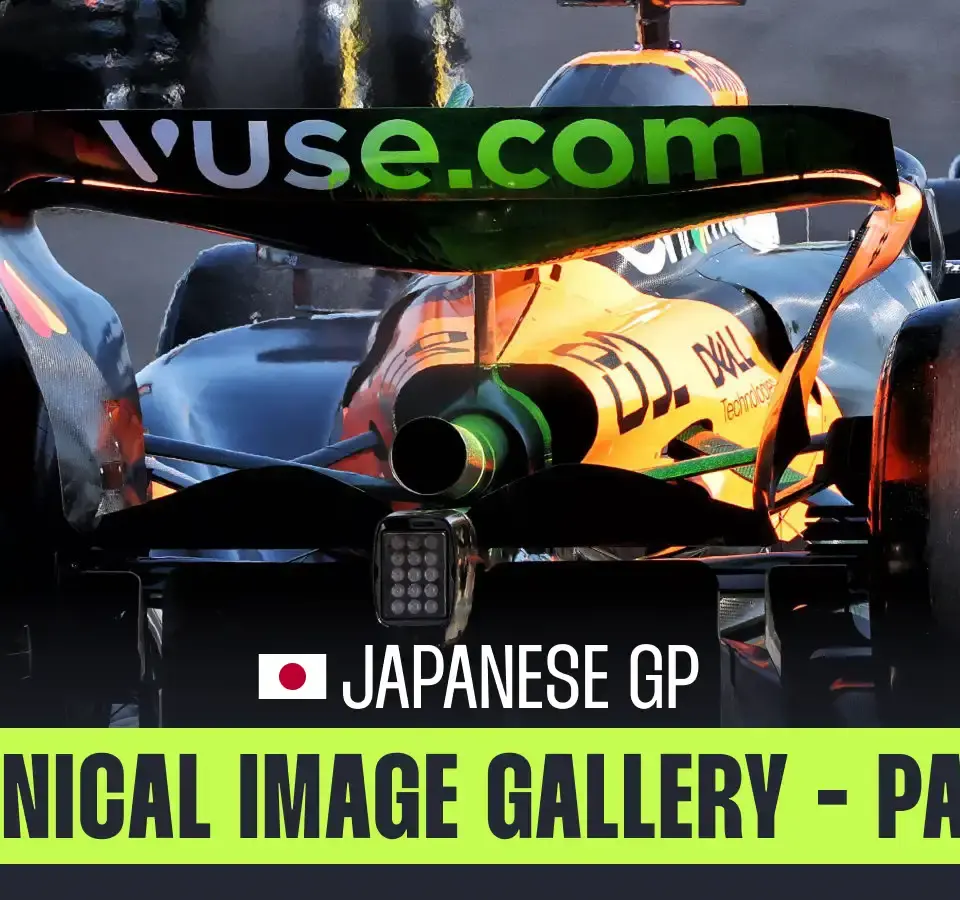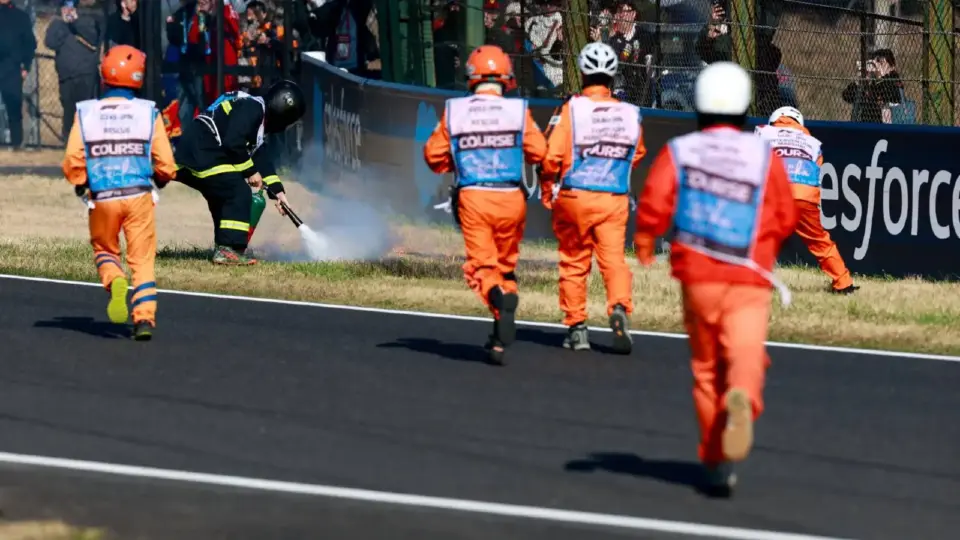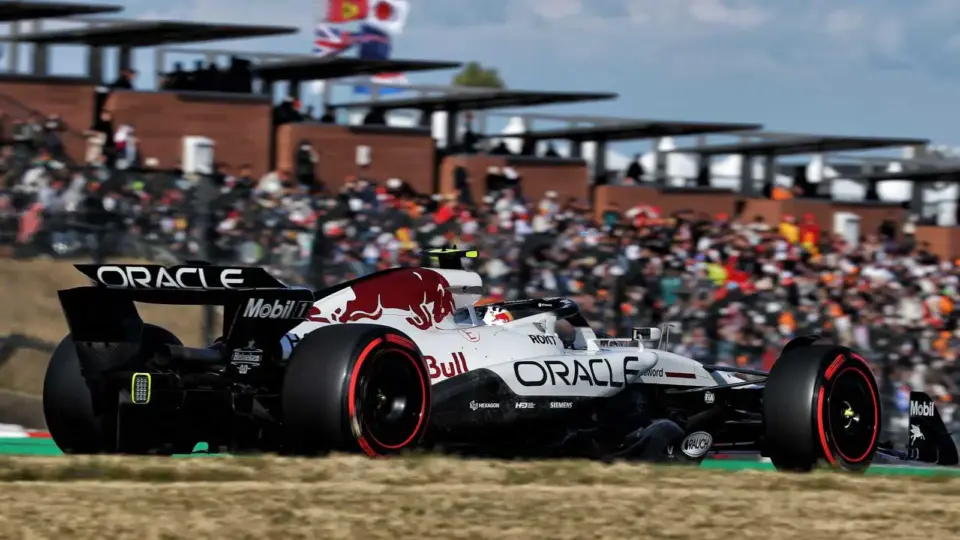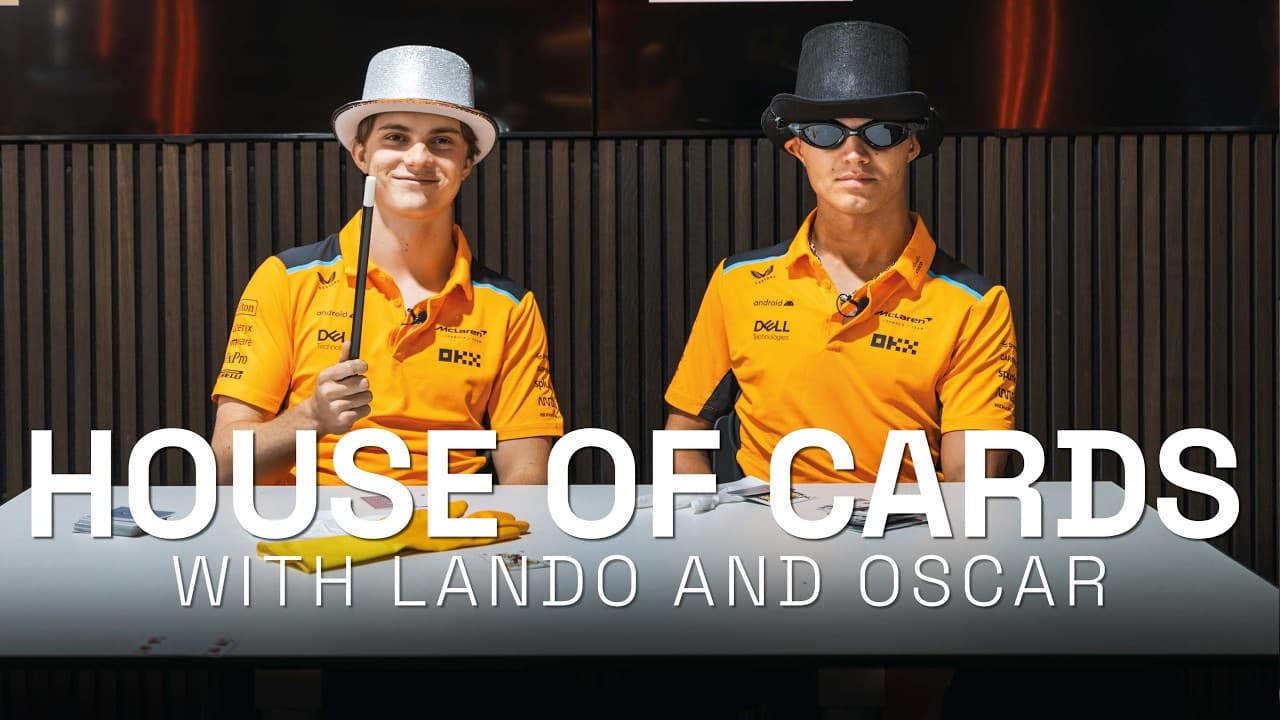In an unexpected twist at the Japanese Grand Prix, Fernando Alonso’s brief off-track excursion brought technical enthusiasts an unexpected glimpse into the mechanical marvels lurking beneath the surface of Formula 1 cars.
When Alonso found himself momentarily off the track, the Aston Martin AMR25 was laid bare, offering a rare look at its diffuser and the complex network of floor tunnels. These components are critical for aerodynamic performance, directing airflow to enhance speed and stability. Observers also noted the strategic positioning of the oil breather pipe beneath the rain light, cleverly integrated into the crash structure with an accompanying winglet.
Meanwhile, teams have been busily applying flo-viz paint to evaluate airflow behaviors. McLaren, for instance, adorned their MCL39 with the bright green substance to decipher real-world airflow over critical areas like the suspension fairings and chassis sides. Racing Bulls took a similar approach, tracing airflow paths on their vehicle, providing insights into the elusive art of automotive aerodynamics.
Further intrigue lay with Red Bull’s RB21, where observers focused on the rear wing’s mounting pillar and the intricate details of the exhaust surround. The diffuser’s unique downward curvature at its intersection with the crash structure also sparked interest. Similarly, the Mercedes W16 offered a detailed view of its floor fences, showcasing geometrical intricacies designed to optimize airflow from the floor’s leading edge outward.
The Sauber C45 brought innovation to the forefront with its unusual sidepod design, featuring a jutted inlet configuration. Introduced earlier at the Australian Grand Prix, this design continues to fascinate with its distinctive depressions behind the mirror assembly, contrasting sharply with rivals’ strategies. Meanwhile, Haas utilized a Kiel probe rake, strategically placed ahead of the rear tire, to gather data on airflow dynamics in that critical region.
Williams unveiled a new front wing for their FW47, designed with a pronounced notch in the lower rear corner of the endplate. This modification aims to improve balance and achieve superior outwash effects. Technical enthusiasts noted a garage moment as a mechanic captured detailed images of flo-viz patterns post-session, underlining the minutely detailed investigations teams pursue.
In the chaos of the pit lane, Red Bull also revised the engine cover on the RB21, seeking the perfect harmony between cooling efficiency and aerodynamic prowess. Observers marveled at Mercedes’ winglet-focused outboard section adjustments on their W16, demonstrating their continuous quest for optimal outwash generation. This was echoed in the Sauber C45’s rear design, which featured a downsloping sidepod and a multi-outlet engine cover, essential for dissipating Ferrari engine heat.
The Japanese Grand Prix’s practice sessions have shed light on the ongoing innovation and competitive spirit that drive Formula 1 forward. Every element, from diffusers to winglets, plays a pivotal role in each team’s strategy, reflecting a relentless pursuit of performance perfection.










